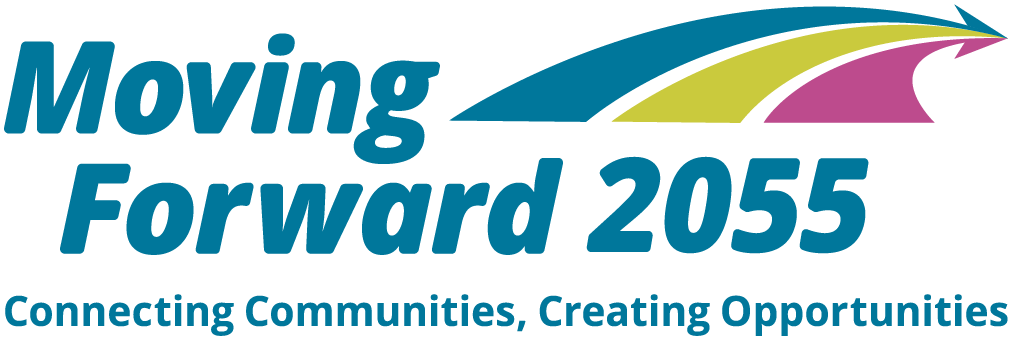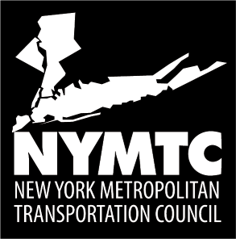A Context For Our Planning - Trends and Change
Managing System Performance
Under federal metropolitan planning regulations, NYMTC must apply a transportation performance management approach in carrying out its federally required transportation planning and programming activities. The process requires the establishment and use of a coordinated, performance‐based approach to transportation planning and programming in support of national goals for federal‐aid highway and public transportation programs.
Major Parameters of the Federally Supported Transportation System
Click on the cards below to reveal parameters

Over 19,000...
Over 19,000 lane‐miles of interstates, freeways, parkways, expressways, arterial and collector roadways.

Over 2,400...
Over 2,400 roadway bridges of all types under the ownership of the state, counties and local municipalities.

Nearly 480...
Nearly 480 route miles of commuter rail and 225 route miles of subway tracks in passenger service, plus hundreds of miles of local, express, commuter, and intercity bus routes and an aerial tramway.

An existing network of...
An extensive network of passenger hubs, transit stations and stops, bus terminals and subway transfer facilities, ferry landings, and bus stops .

More than 1,300...
More than 1,300 miles of bicycle facilities, ranging from shared‐use bike trails to on road bike lanes, in addition to pedestrian sidewalks, trails, and paths.

Supporting infrastructure such as...
Supporting infrastructure such as rail yards and highway maintenance facilities, highway rest areas, parking lots and garages, bus depots and transit storage yards, bicycle parking areas, toll plazas, signage, signals, electronics, and other equipment.
A System Performance Report, is an element of Moving Forward 2055 (within Chapter 3) that evaluates the condition and performance of the transportation system, sets performance targets, and reports on current progress in meeting the targets. These items are addressed for the following required measures within the NYMTC planning area and apply to specific systems and assets as defined in Chapter 3:
- Highway Safety Performance
- Pavement and Bridge Condition Performance
- System Performance, Freight, and Congestion Mitigation and Air Quality Improvement Program Performance
- Transit Asset Performance
- Transit Safety Performance
Specific performance metrics also correspond to each of the Vision Goals and are presented in Chapter 4.
Our Expectations for the Future
NYMTC’s planning area has one of the most complex and highly used transportation networks in the world. On a typical weekday the region’s multimodal transportation network handles more than 18 million auto trips and 7 million transit trips. Notably, public transit weekday mode share on this network is the highest of all urbanized areas in the United States. For example, in 2024 annual ridership on the New York City Transit’s subways was more than 1.19 billion, MTA bus ridership was more than 409 million, Long Island Rail Road ridership exceeded 75 million trips, and Metro-North Railroad surpassed 65 million trips. About one in every three users of mass transit in the United States, and two of three rail riders, use this system (according to data reported through the Federal Transit Administration, National Transit Database), which is a testament to the scale of the public transit components of the network.
The transportation system includes both the federally supported transportation system and the facilities of five self‐financed public authorities with jurisdiction over significant system components that are not considered part of the federally supported system, namely: the Port Authority of New York and New Jersey, the New York State Thruway Authority, the New York State Bridge Authority, MTA Bridges and Tunnels (legally, the Triborough Bridge and Tunnel Authority), and the Nassau County Bridge Authority.
Continued Growth
Understanding socioeconomic trends is an essential step to forecasting travel demand and use of the regional transportation system. NYMTC's socioeconomic and demographic forecasts estimate population and employment changes over the planning period for the multistate region (31 total counties including the NYMTC Planning Area and the Mid-Hudson Valley, northern New Jersey, and southwest Connecticut). Any number of changes in this multistate region can impact activity and travel, as well as present a challenge to the regional transportation system and highlight the importance of accommodating future growth while safeguarding the quality of life and health of residents and visitors.
The broad impacts of the COVID-19 pandemic, including supply chain disruptions, widespread adoption of remote and hybrid work schedules, and shifts in housing demand and preferences, along with restrictions on immigration during the COVID-19 pandemic, contributed to a slight decline in population for the NYMTC region, compared to 2019 pre-pandemic figures. Despite this drop in population, much of the forecasting through 2055 assumes that each subregion will recover to its 2019 levels of population and resume some degree of pre-pandemic growth trend established in the late 2010s.
By 2055, the multistate region is expected to be home to a population of 26.1 million people, representing a population gain of 3.1 million over the 2022 base year, and 14.2 million jobs, an increase of 1.8 million jobs from 2022.
Socioeconomic and Demographic Forecasts for the NYMTC Planning Area
Use checkboxes to show desired demographic data
Population
- 2022 12.67 million
- 2055 14.33 million
- Percent Change 2022-2055 13.1%
Employment
- 2022 7.22 million
- 2055 8.32 million
- Percent Change 2022-2055 15.2%
Civilian Labor Force
- 2022 6.63 million
- 2055 7.39 million
- Percent Change 2022-2055 11.4%
Average Household Size
- 2022 2.52
- 2055 2.52
- Percent Change 2022-2055 0.00%
Among the NYMTC subregions, New York City is expected to have the highest growth rate for population and employment, at 14 percent and 17 percent, respectively, and the highest absolute changes for all indicators except average household size. New York City is expected to add 504,000 workers to the civilian labor force, 847,000 jobs, and over 1.1 million people to the population by 2055. While the least populated of the three sub-regions, the Lower Hudson Valley has the highest growth rate in civilian labor force (11.9 percent) and average household size (1.1 percent), its population is expected to grow the slowest at approximately 10 percent. Long Island’s average household size remains the highest at 2.97, and the subregion is expected to add 377,000 people to its population, 172,000 jobs, and 167,000 workers to the civilian labor force.
Moving People
Growth in travel is expected to occur through 2055 in the NYMTC planning area across all modes in response to projected economic growth. Total daily trips are forecast to reach approximately 30 million by 2055, an increase of 18 percent from current daily travel. Daily auto trips are expected to grow by 15 percent, while daily transit trips are forecast to grow by 28 percent. Growth in total trips translates to increases in daily vehicle miles of travel (VMT) and vehicle hours of travel (VHT). VMT is expected to increase by 15 percent, consistent with the increase in daily auto trips, while VHT (an indicator of congestion) is expected to increase by 34 percent through 2055.
Moving Goods
More than 438 million tons of goods, worth more than $715 billion, moves into, out of, and through the NYMTC planning area by truck, rail, water, air, and pipeline annually. Most of the goods — 43 percent of the total tonnage — are traveling into the region, to residents and businesses within the planning area. Trucks are the primary transportation mode, accounting for 94 percent of regional volume and 96 percent of value. By 2055, the freight tonnage and value are expected to increase by a compound annual growth rate of 1.1 percent (tonnage) and 1.9 percent (value). While trucks will remain the predominant transportation mode, increases in tonnage of freight traveling by pipeline, air, water and rail modes are also expected.
Transformational Changes
The transportation landscape is undergoing changes driven by technological advancements, evolving societal needs, and global trends. The long-term impacts are dependent on assumptions about global and regional changes. These assumptions have the potential to transform the nature and means of travel for people and goods in the multi‐state metropolitan region.
Technological Advancements
Emerging technologies such as autonomous vehicles, electric vehicles, on-demand and shared services, and intelligent transportation systems will fundamentally alter how people and goods move.
Economic and Land Use Patterns
Changing workforce needs and consumers' mobility preferences affect travel demand, as well as transportation and land use needs.
Environmental Imperatives
Extreme weather events, sea level rise, air pollution, and environmental sustainability will drive the adoption of green infrastructure and alternative energy sources.
Demographic Changes
Aging populations, migration patterns, growing housing demand, and shifting mode preferences will require adaptable and inclusive land use and transportation solutions.
Policy and Regulatory Evolution
The regulatory landscape will need to evolve to accommodate new transportation needs, technologies, and strategies.
Moving Forward 2055 identifies two types of transformative changes—Trends and Disruptors:
- Trends are more predictable, follow economic patterns, and impact mobility over longer timeframes. The Plan identified four trends – virtual economy, shared mobility, technological advancements, and distribution innovations and good movements.
- Disruptors are less predictable both in timing and impact, vary in intensity, and can lead to sudden changes in mobility. The Plan identified five disruptors – extreme weather, energy transformation, changing demographics and lifestyles, land use patterns, and cybersecurity.
Transformational changes and the future of mobility will influence Moving Forward 2055’s strategic framework. Some possible outcomes will influence how NYMTC as an organization and its members seek to fulfill the goals of their Shared Vision for Regional Mobility. Other potential outcomes, such as evolving forms of shared mobility, will affect the way these goals are pursued. Moving Forward 2055 attempts to lay the groundwork for anticipating these developments and formulating approaches.

